Stealth Capability of the Most Advanced Fighter Jets of USA
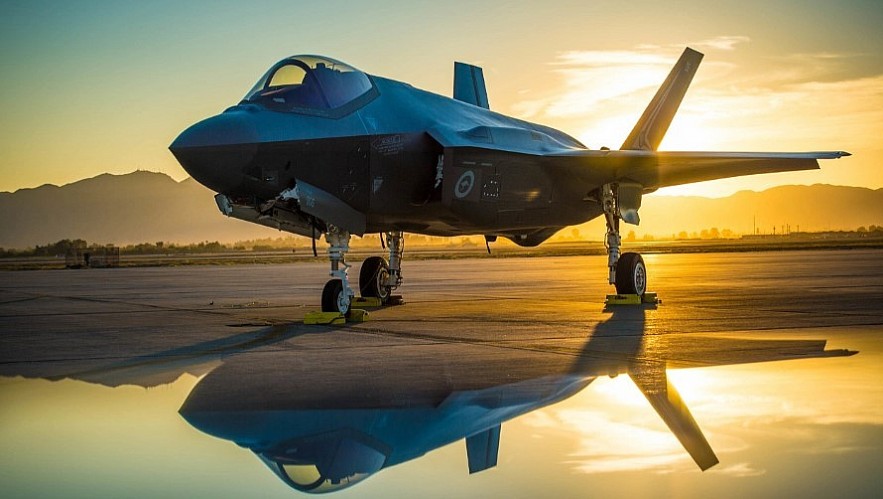 |
| F-35A Lightning II |
| Contents |
Stealth Capabilities of the F-35 and F-22
All stealth fighters in the world, including Russia's Su-57 and China's J-20, can actually be easily found using radar systems that have been around for many years.
The F-35 and F-22's stealth features basically work to delay or stop signatures from being detected by high-frequency radars, or radars that can "lock on target" for rockets.
Nonetheless, stealth fighters can be identified by low-frequency radars, which lack guidance capabilities, due to the physical configuration of the fighter aircraft.
Because of this, the majority of nations that have early warning systems in place are able to identify stealth aircraft as they enter their airspace, but precisely "aiming" them is a challenging task.
Check More: Facts About the U.S 6th-Generation Stealth Fighter - Most Expensive In The World
Fact-Check: Stealth Ability of Fighter Jets
The quote "Does this mission really require a magic cloak, or would it be better if we make the opponent aware of the danger but can't do anything?" is well-known among U.S. Navy pilots and captures the essence of stealth.
In order to create the ability to hide, or at least particularly delay detection time, stealth is not a single function integrated on modern fighters; rather, it is a homogenous combination of numerous technologies, materials, and production methods. No stealth aircraft is completely "invisible"; detection is a "struggle" between cost and technological constraints.
Radar systems, on the other hand, operate by first emitting bands of electromagnetic waves, which are then reflected when they interact with foreign objects—in this case, a fighter aircraft—and detecting anomalies. These electromagnetic waves are meant to be deflected by stealth fighters so they can't return to broadcast radar.
Stealth planes, however, are forced to select which radar to avoid because electromagnetic waves can emit at a wide range of wavelengths and frequencies, interacting with objects in different ways.
Video: F-35 and its 5th Generation Capabilities
"Disappear" from Specific Radars
Based on the electromagnetic wave frequencies that they emit, warning systems are typically classified into multiple categories; the most widely used bands are L, C, S, X, and K. A wavelength is used by each band, and Only systems with higher frequencies, or smaller wavelengths, can give cruise missiles precise images to target.
Put another way, low-frequency radars are able to identify stealth fighters with ease, but because of their larger wavelengths, they are unable to deliver precise information needed to "lock" on the target. All they can say is "foreign object there" and give a relative coordinate.
Fighter aircraft such as the F-35 are currently being developed to counter the high-frequency radars C, X, and K. This indicates that they are detectable by air traffic control's S-frequency radar systems, which comprise most of the stations. The air force can still use the information to deploy counter-attack fighters even though an exact image of the stealth fighter cannot be provided. Because stealth aircraft are meant to be unexpected and withdraw, they unintentionally create "threats" by engaging in unnecessary combat.
Stealth is an Advantage, Not A Magical Ability
The least obvious component of a fighter's "stealth" is its planning, which is crucial to the outcome of a mission involving stealth fighters.
In other words, every plane will be found.
An efficient plan will give access to the most recent information about the combat area, enable mission completion time calculations, and identify the best flight path to the target based on aircraft superiority. Pilots can improve each mission's success and safety rate by carefully planning ahead.
"Without a clear plan, no stealth aircraft is permitted to take off. To find the best solution, we even had to run a number of simulated attacks, but we were unable to calculate it. to every variable that comes up," the 393rd Bomber Squadron's commander, Lieutenant Colonel Christopher Conant, stated.
It is suicide to enter enemy airspace without a plan, even if you are flying an F-35. Although it is a clear benefit, being invisible is not a "miracle" fix for every issue that could occur in the sky.
Stealth Ability of the "Ghost of Death" B-2 Spirit
With its subsonic speed capability, the B-2 has the inherent versatility of manned bombers. This aircraft can reduce its radar exposure thanks to second-generation stealth technology, which enables it to breach the enemy's advanced defenses and strike well-defended targets. the higher.
The B-2 is said to have had significant advantages over earlier bombers due to its combination of stealth and aerodynamics as well as a sizable payload capacity. This aircraft's ability to blend in with its surroundings by cutting down on acoustic, infrared, electromagnetic, optical, and radar signals makes it exceedingly difficult for adversaries to locate, follow, and take down. Composite materials, unique coatings, and wing design are some of the other stealth features that are still considered top secret.
The B-2's highly sensitive shell, which renders it unusable in all weather conditions, is one of its drawbacks. It is particularly brittle when it rains and is susceptible to damage from heat and humidity. cozy. The rain was the reason a B-2 aircraft's electronic components got wet and the aircraft malfunctioned, ultimately resulting in a crash. In order to maintain stealth, B-2 must work alone and without an escort. Because it cannot defend itself, the B-2 will undoubtedly be shot down if it is discovered by an enemy fighter.
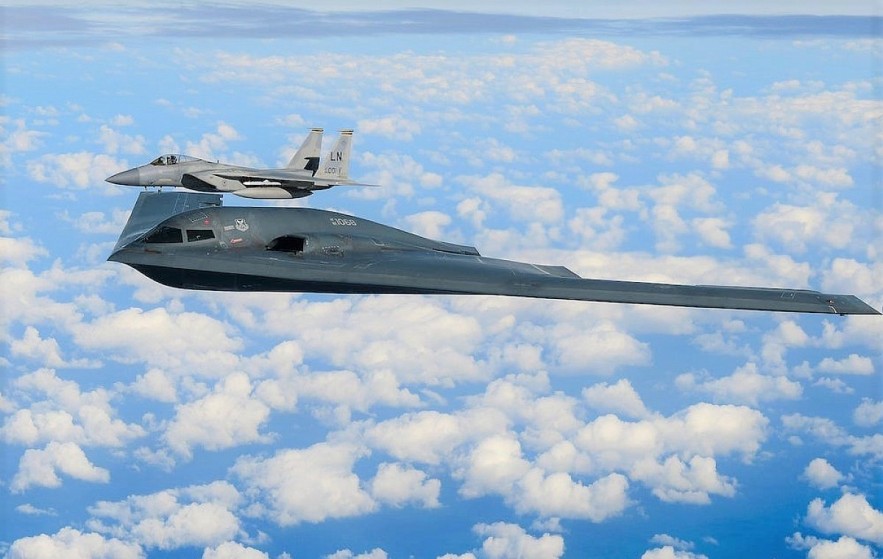 |
| B-2 Aircraft and F-15C |
Fatigue caused a crack in the rear frame between the B-2's engines. It still tired out sooner than anticipated even after being replaced, which made aircraft maintenance challenging. There was a major issue with the indirect magnetic control actuator of the aircraft. The system becomes one of the most problematic parts due to ineffective cooling, which prevents the aircraft from completing its task. The B-2 is not only exceedingly difficult to repair if damaged, but it also requires an overhaul every seven years, which takes years and costs an average of roughly $60 million.
The plane requires routine maintenance because its stealth paint is easily damaged and even a small scratch will appear on radar during flight like a huge can. The B-2 requires fifty to sixty hours to repaint the shell for every hour of flight. It is referred to as the "fluffy queen in the maintenance workshop" because it needs extremely meticulous care.
The aircraft's high operating costs also make it useless for airstrikes against guerrilla opponents, like those in Afghanistan and Iraq. This is the reason it's also called "Golden Useless."
There have been reports and images of B-2 stealth bombers being "captured" by Google Earth surface on the internet lately. The US Whiteman Air Force Base is located in Davis Township, Missouri, and the US stealth aircraft was passing over it at the time.
Maxar Technologies, a business that specializes in satellite imagery, captured the picture. The color selection made at the time of satellite photography was what caused the blur effect on the B-2's fuselage, not the aircraft's speed. Following its publication, the picture received thousands of comments and hundreds of thousands of views from the online community.
In September, Google Earth also found another B-2 at Whiteman Air Force Base, which had landed off the runway and was lying on its side on the grass. Later on, the US military acknowledged that the aircraft experienced an issue during a training flight and that an emergency landing at Whiteman was required. The "ghost of death" B-2 Spirit's ability and stealth effectiveness are being questioned by military experts, analysts, and internet users in light of the incident.
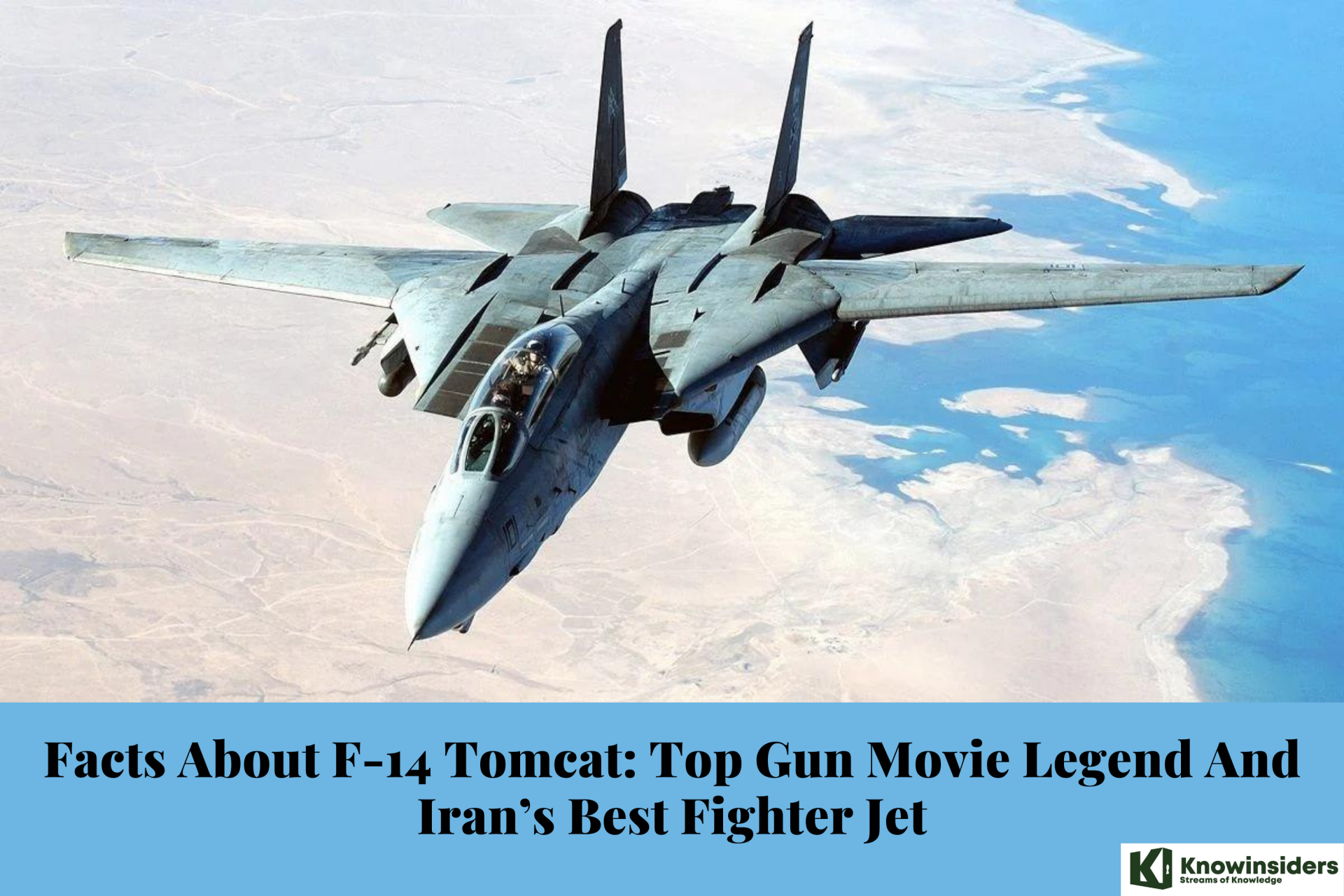 Facts About F-14 Tomcat: Top Gun Movie Legend And Iran’s Best Fighter Jet Facts About F-14 Tomcat: Top Gun Movie Legend And Iran’s Best Fighter Jet The F-14 Tomcat was the US Navy’s carrier-based two-seat air defense, intercept, strike, and reconnaissance aircraft. Below we provide some historical facts about the F-14 ... |
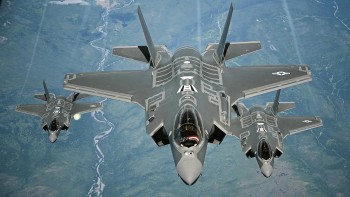 Facts About the Nicknames of 5 Most Popular American Fighter Jets Facts About the Nicknames of 5 Most Popular American Fighter Jets All types of combat aircraft of the US military have full and very impressive names set out by the manufacturer. However, they are all given ... |
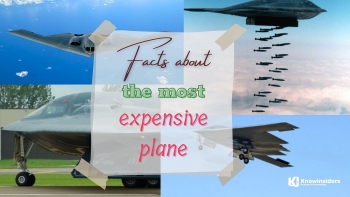 Facts About The World's Most Expensive Plane Of All Time Facts About The World's Most Expensive Plane Of All Time It has been more than 30 years since the B-2 Spirit first took to the sky. Here are some little known facts about the world's ... |























